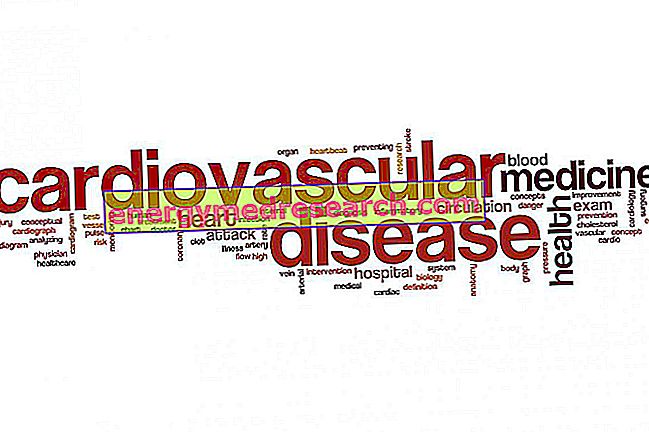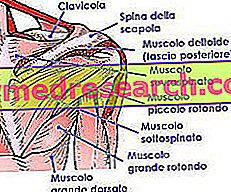What are white points?
Typical of the face, the white points are very small and unsightly superficial cysts filled with keratin, with a semi-solid consistency and a round and golden appearance.

Fortunately harmless, the white points are not however well accepted by those who suffer them, especially because they tend to grow on the nose, around the eyes or on the cheeks, so precisely in those areas most exposed to the gaze of others. For this reason, many men and women tormented by this blemish turn to the dermatologist to proceed with the removal of white spots.
Please note
In common parlance, the term "white points" may refer to two different disorders: millet grains and closed comedones. Although apparently similar, the two types of white dots differ in their causes and treatment. In this article we will focus exclusively on millet grains.
Features
The white spots may appear suddenly in the form of small bubbles with dimensions that generally do not exceed 2 mm in diameter.

Stuffed with keratin, the white spots are observed much more often in women, especially on the skin of the face or in other areas that have hair follicles (short hairs, soft and so thin that they go unnoticed).
Millet grains are not characteristic of a particular age group (as is the case for acne, a disorder typical of puberty): these white spots can in fact appear during the neonatal period, in infancy or in adulthood.
Causes
The causes that lead to the formation of white spots on the skin are not precise and unequivocal. However, experts have postulated many hypotheses about the origin of these blemishes.
Firstly, the formation of white spots appears to be favored both by a lack of / inadequate facial cleansing and by repeated application of make-up cosmetics unsuitable for one's skin type (too aggressive or excessively occlusive). Similarly, even an improper cleansing of the face with irritating or strongly degreasing detergents can alter and deplete the hydro-lipid film that covers the epidermis, to the point of favoring the appearance of these imperfections.
A certain correlation has also been observed between the origin of millet grains and an incomplete or lack of development of the sebaceous glands.
Even the presence of burns, grazes, dermabrasions or scars (especially those left by acne) on the skin can promote the formation and development of millet grains. Again, these imperfections can be the consequence of an exaggerated and continuous exposure to the UV rays of the sun or tanning lamps, especially in the absence of adequate sun protection.
In adults, the birth of millet grains can in some way be connected with more serious dermatological pathologies, first of all lichen planus *, porphyria * and epidermolysis bullosa *.
In other cases, on the other hand, millet grains can be a side effect of a pharmacological treatment based on corticosteroid creams or radiotherapy: while in the first case the white spots tend to appear in the areas of cutaneous atrophy (caused precisely by pharmacological treatment). ), in the second circumstance the millet grains emerge after the destruction of skin and skin appendages determined by radiological treatment.
Glossary
- Lichen planus: chronic inflammatory dermatosis of an immunological nature that affects skin, mucous membranes and nails.
- Porphyria: clinical syndrome that affects skin and nervous system. A typical sign of porphyria is the emission of very dark red urine (very similar to wine).
- Epidermolysis bullosa: genetic disease that affects certain skin proteins, such as in particular collagen, keratin and other protein compounds with adhesive properties. It manifests itself with blisters, bubbles and detachments of skin and mucous following microtraumas.
Mile Grains in Babies
Even small children can be affected by these white spots, but the triggers are different from those listed above for adults and adolescents. Probably, the explanation of the development of millet grains in newborns lies in a transient keratinization stimulated by hormonal influences not yet fully clarified from the scientific point of view. The white spots that grow during the neonatal age - unlike those of adulthood - constitute a completely reversible condition.

Treatments
As analyzed, the white points of the newborn tend to regress spontaneously; therefore, they do not require any kind of treatment.
Different speech for the adult, in which millet grains only rarely regress by themselves. Not being able to burst them, the white points require the intervention of a doctor: the operation is not difficult and is performed regularly in the clinic.
- Since they have no outlet, millet grains cannot burst as if they were normal pimples (although, as we know, the habit of exploding pimples is not a recommended practice, since the infection could spread to nearby sites).
The white spots can be evacuated simply by performing a micro cut on the epidermal dome of the cyst, followed by the squeezing of the material contained in it. Alternatively, millet grains can be removed with the CO2 laser, after local anesthesia with lidocaine-based creams.
To support the treatment, we recommend the regular application of creams with exfoliating (keratolytic) action: particularly suitable are glycolic and salicylic acid creams.
Prevention
Even in these circumstances, the best cure is prevention. In fact, even millet grains can be prevented in some way: it seems that regularly exfoliating the skin of the face (max. A couple of times a week) is a good habit to keep these small imperfections away.
It is also recommended to always use quality make-up products that are not overly occlusive; to avoid too degreasing and irritating soaps.
The cosmetics used, therefore, must be specific for your skin type (dry, sensitive, normal, mixed, oily, etc.). In case of doubt in this regard, it is always useful to carry out a specialist examination by the dermatologist who will be able to give exhaustive indications on which products best suit each patient.
Summing up...
TYPICAL AREAS OF FORMATION OF WHITE POINTS (millet grains):
- Mobile eyelid
- Lower eyelid
- Nose (in particular, the wings of the nose)
- Lip contour
- Cheeks
- chin
MAIN CAUSES
- Missed / incorrect facial cleansing
- Cleansing with excessively degreasing or aggressive soaps
- Incomplete development of the sebaceous glands
- Skin disorders (lichen planus, porphyria, epidermolysis bullosa)
- Care with cortisone creams
- Radiotherapy
- Burns, excoriations, dermabrasions or scars left by acne
- Transient keratinization in the newborn, linked to hormonal alterations
TREATMENTS
- White points in the newborn: no treatment of any kind is necessary because they regress spontaneously
- Millet grains in the adult: they require surgical removal with the laser or incision of the cysts with the tip of a scalpel or a sterile needle (the operation must be performed by an expert, and always in a sterile environment)
- Treatment to prevent white spots: chemical exfoliation and application of exfoliating creams



